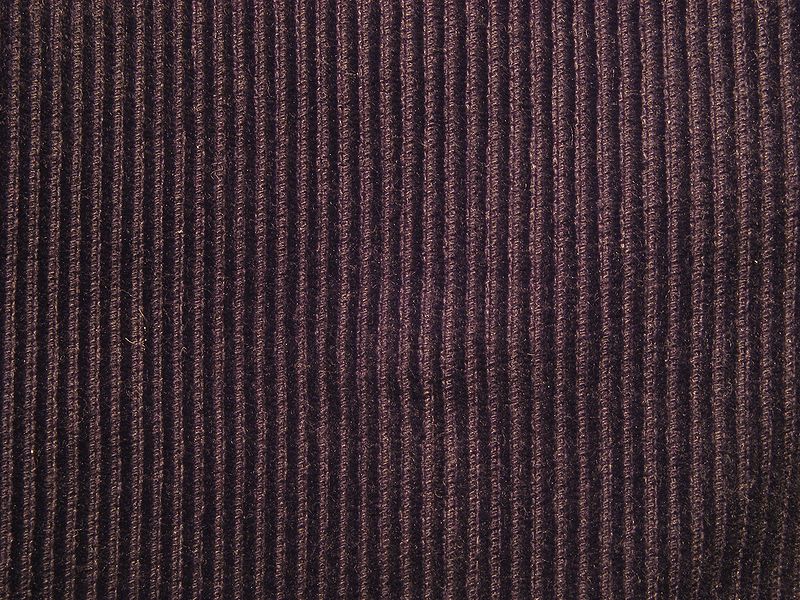Corduroy is a textile composed of twisted fibres that, when woven, lie parallel (similar to twill) to one another to form the cloth’s distinct pattern, a “cord.” Modern corduroy is most commonly composed of tufted cords, sometimes exhibiting a channel (bare to the base fabric) between the tufts. Corduroy is, in essence, a ridged form of velvet.
The fabric looks as if it is made from multiple cords laid parallel to each other and then stitched together. The word corduroy is from cord and duroy, a coarse woollen cloth made in England in the 18th century.The interpretation of the word as corde du roi (from French, the cord of the King) is a folk etymology.
As a fabric, corduroy is considered a durable cloth. Corduroy is found in the construction of trousers, jackets and shirts. The width of the cord is commonly referred to as the size of the “wale” (i.e. the number of ridges per inch). The lower the “wale” number, the thicker the width of the wale (e.g., 4-wale is much thicker than 11-wale). Corduroy’s wale count per inch can vary from 1.5 to 21, although the traditional standard falls somewhere between 10 and 12. Wide wale is more commonly used in trousers and furniture upholstery (primarily couches); medium, narrow, and fine wale fabrics are usually found in garments worn above the waist.

